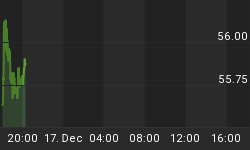A too-strong currency is, in theory, supposed to make it harder to sell things to cheap-currency countries, thus crimping corporate profits and by implication pretty much everything else.
The US dollar has been rising against the rest of the world for over a year, so let's see how we're doing. From today's Wall Street Journal:
Falling Corporate Profits Blur U.S. Growth Outlook
Profits at U.S. companies during the third quarter posted their largest annual decline since the recession, underscoring the competitive pressure from a strong dollar and weak global demand that could limit businesses' ability to support stronger economic growth in the coming months.
A comprehensive measure of companies' profits across the U.S.-earnings adjusted for inventory and depreciation-dropped to $2.1 trillion in the third quarter, down 1.1% from the second quarter, the Commerce Department said Tuesday. Compared with a year earlier, profits fell 4.7%, the biggest annual decline since the second quarter of 2009. That marked only the second time profits have fallen on a year-over-year basis since the recession ended in mid-2009.
Economists warn weak profits could weigh on business investment, put pressure on stock prices that some analysts think look expensive, and pose a challenge for Federal Reserve officials who are trying to raise interest rates after seven years of near-zero rates.
"Profits are slowing, there's no way around that," said Deutsche Bank chief U.S. economist Joseph LaVorgna. "These are things that suggest we're past the midpoint of the business cycle, unfortunately, but it doesn't mean we can't run this [expansion] a bit longer."
U.S. companies' profits plunged during the recession then rebounded in the early stages of the recovery. But they've been trending lower for years, a reflection of slow growth abroad and moderate growth at home. Profits as a share of overall economic output have shrunk to 11.4% in the third quarter from a recent peak of 12.5% in 2012.
The latest reading highlights the divergence between domestically oriented operations and U.S. companies' overseas operations, where the stronger dollar has effectively made U.S. products more expensive and global weakness has undercut demand.
Tuesday's report showed domestic profits rose $7.3 billion in the third quarter, or 0.4%, but fell 2.8% from the third quarter of 2014. Meanwhile, foreign profits fell by $30 billion, a 7.4% decline from the second quarter and 12.2% drop from a year earlier.
We are indeed following the currency war script. And since most major trends - spreading Middle East war, several different kinds of chaos in Europe, an emerging credit crunch in China, a rising Fed Funds rate in the US - point to an even stronger dollar in 2016, it's safe to predict that corporate profits will keep falling.
The question then becomes, at what point do falling profits become the dominant story for stock market investors? Right now, the markets are focused on foreign capital inflows and central bank liquidity, and have concluded that slightly less profitable corporations are still better bets than most other investments. But what happens when "slightly less profitable" becomes "dramatically less profitable" or "unprofitable?" We'll find out shortly.

















